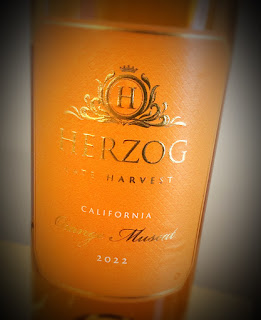One of California's best and biggest wine regions is ready to do business again. Paso Robles put their best feet forward in a webinar, held in celebration of the state's impending reopening, after the lengthy pandemic restrictions.
Stacie Jacob of Travel Paso said a road trip is just what everyone needs right now, especially a road trip to Paso Robles. She assured those on the Zoom meeting that when they are ready to travel, Paso Robles is ready to welcome them. She pointed out that Paso Robles gets things most communities of 30,000 people don't get - world class wine, world class beer, world class restaurants and world class accommodations among them.
Mike Dawson, also of Travel Paso, promoted "girlfriend getaways" and the fun of a summer trip to the wine region that lies about halfway between Los Angeles and San Francisco. He called Paso the "wine country with beach access."
Jason Haas, of Tablas Creek Vineyard, said he likes the small town feel in Paso Robles. He recalled that when he moved to Paso, the big news on the police blotter was a swarm of bees on Spring Street. Haas, whose father was a co-founder of Tablas Creek, talked about the difficulty of maintaining social distance during wine tastings in the time of COVID. They are renovating the tasting room with bar seating inside or an outside table available for guests. He said the new use of outdoor areas was one of the silver linings of the COVID era.
Matt Brynildson, of Firestone Walker Brewing Company, made it clear that there is nowhere he would rather be than in Paso Robles. A music fan, he commented that there is no shortage of live music in Paso. My box of goodies for the webinar included Firestone Walker's Anniversary Ale, but he said they also have a hazy IPA, Mind Haze, among many other brews.
Eva Peck, of Stables Inn, spoke of her boutique accommodations, which are the smaller sister project of the more established Hotel Cheval. Peck said Cheval's owners are avid equestrians who refurbished an old building, turning it into a funky hotel with beautifully appointed rooms. Stable Inn was recently named one of the best new hotels in the world. Cheval is now preparing to expand across the street, and Peck is looking forward to a more relaxed time when visitors can enjoy the travel experience much more than they have over the past year and a half.
There were comments made during the online event that it would hopefully be "the last Zoom meeting" for Travel Paso, but I hope it won't. The folks in Paso Robles have done several webinars designed to keep people in the loop, and they've done a fantastic job with them. They are quite informative - so much more than a simple sales pitch - and I would like to see their online presence continue.
Firestone Anniversary Ale XXIIIThe slogan for Firestone Walker Brewing Company is "Beer Before Glory," which sounds so much better than citing the famous last words, "hold my beer." During the decades they have been in operation, Firestone Walker has grown into a major player in the beer industry. Brynildson indicated that his crew loves beer and loves making beer. Their Anniversary Ale XXIII is very dark, like a porter, and carries an alcohol level of 11.5% abv. The nose is extremely nutty, with a mountain of malt. The palate is chocolatey, but savory instead of sweet. Notes of vanilla, caramel and brown sugar also appear. Several dark beers were aged in liquor barrels for a year, and a dozen winemakers participated in the blending process, what Brynildson called "organized chaos." He feels the beer fits in well in the artisan community that is Paso.
Tablas Creek Vineyard Côtes de Tablas 2019
Tablas Creek Vineyard was founded "in the limestone hills of western Paso Robles" by the Perrin Family of Château de Beaucastel and the late Robert Haas of Vineyard Brands. The winery is dedicated to sustainably farmed grape varieties of the Rhône Valley.
The 2019 Côtes de Tablas features 44% Grenache grapes, 30% Syrah, 17% Counoise and 9% Mourvèdre. Each variety was harvested and vinified separately, then blended together in the spring before being aged in neutral oak for a year. Alcohol tips 14% abv.
The 2019 Côtes de Tablas is medium dark in the glass, ruby red with a nice violet tinge. The nose delivers lots of fruit - strawberry, cherry, red currant - and delivers it in such a fresh manner. The fruit of Grenache, the power of Syrah, the structure of Mourvèdre and the wildness of Counoise work together splendidly. The flavors are fresh and bright, almost as if there had been no oak involved. It is almost surprising, considering the muscular grapes in the blend, that the wine has a light and elegant feel. The tannins are firm but not a bother, so pairing is easy without losing the sipping factor.
Follow Randy Fuller on Twitter




















